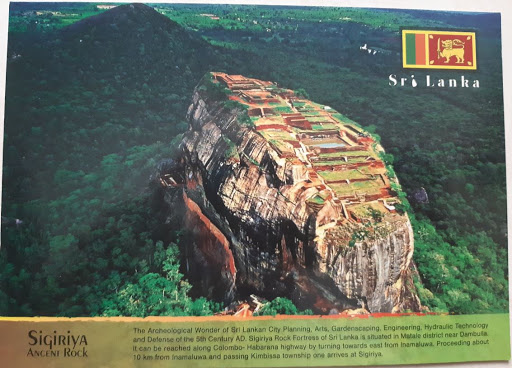The Archaeological wonder of Sri Lankan City planing, Arts, Gardenscaping, Engineering, Hydraulic Technology and Defense of the 5th century AD. Sigiriya Rock Fortress of Sri Lanka is situated in Matale district near Dambulla. Rising 200 meters vertically from the flat pains. Sigiriya Rock provides you with one of the most dramatic sites in Sri Lanka. Top of this rock contains ruins of an ancient palace complex, built during the reign of King Kassyapa (477AD - 495AD) and surrounding rock is the Royal Garden. It can ve reached along Colombo - Habarana highway by turning towards east from Inamaluwa. Proceeding about 10km from Inamaluwa and passing Kimbissa township one arrives at Sigiriya.
Sunday, August 2, 2020
Tuesday, December 24, 2013
UAE : Al Ain Phone Card
Cultural Sites of Al Ain (Hafit, Hili, Bidaa Bint Saud and Oases Areas):
The Cultural Sites of Al Ain (Hafit, Hili, Bidaa Bint Saud and Oases Areas) constitute a serial property that testifies to sedentary human occupation of a desert region since the Neolithic period with vestiges of many prehistoric cultures. Remarkable vestiges in the property include circular stone tombs (ca 2500 B.C.), wells and a wide range of adobe constructions: residential buildings, towers, palaces and administrative buildings. Hili moreover features one of the oldest examples of the sophisticated aflaj irrigation system which dates back to the Iron Age. The property provides important testimony to the transition of cultures in the region from hunting and gathering to sedentarization.
Sunday, November 25, 2012
Spain : Tower of Hercules (2009)
The Tower of Hercules has served as a lighthouse and landmark at the entrance of La Coruña harbour in north-western Spain since the late 1st century A.D. when the Romans built the Farum Brigantium. The Tower, built on a 57 metre high rock, rises a further 55 metres, of which 34 metres correspond to the Roman masonry and 21 meters to the restoration directed by architect Eustaquio Giannini in the 18th century, who augmented the Roman core with two octagonal forms. Immediately adjacent to the base of the Tower, is a small rectangular Roman building. The site also features a sculpture park, the Monte dos Bicos rock carvings from the Iron Age and a Muslim cemetery. The Roman foundations of the building were revealed in excavations conducted in the 1990s. Many legends from the Middle Ages to the 19th century surround the Tower of Hercules, which is unique as it is the only lighthouse of Greco-Roman antiquity to have retained a measure of structural integrity and functional continuity.
Saturday, November 24, 2012
Germany : Zollverein Coal Mine Industrial Complex in Essen (2001)
The Zollverein industrial complex in Land Nordrhein-Westfalen consists of the complete infrastructure of a historical coal-mining site, with some 20th-century buildings of outstanding architectural merit. It constitutes remarkable material evidence of the evolution and decline of an essential industry over the past 150 years.
Wednesday, November 21, 2012
France : Palace and Park of Versailles (1979)
The Palace of Versailles was the principal residence of the French kings from the time of Louis XIV to Louis XVI. Embellished by several generations of architects, sculptors, decorators and landscape architects, it provided Europe with a model of the ideal royal residence for over a century.
Tuesday, November 6, 2012
Belarus : Architectural, Residential and Cultural Complex of the Radziwill Family at Nesvizh (2005)
The Architectural, Residential and Cultural Complex of the Radziwill Family at Nesvizh is located in central Belarus. The Radziwill dynasty, who built and kept the ensemble from the 16th century until 1939, gave birth to some of the most important personalities in European history and culture. Due to their efforts, the town of Nesvizh came to exercise great influence in the sciences, arts, crafts and architecture. The complex consists of the residential castle and the mausoleum Church of Corpus Christi with their setting. The castle has ten interconnected buildings, which developed as an architectural whole around a six-sided courtyard. The palaces and church became important prototypes marking the development of architecture throughout Central Europe and Russia.
Monday, November 5, 2012
Belarus : Mir Castle Complex (2000)
The construction of this castle began at the end of the 15th century, in Gothic style. It was subsequently extended and reconstructed, first in the Renaissance and then in the Baroque style. After being abandoned for nearly a century and suffering severe damage during the Napoleonic period, the castle was restored at the end of the 19th century, with the addition of a number of other elements and the landscaping of the surrounding area as a park. Its present form is graphic testimony to its often turbulent history.
Subscribe to:
Posts (Atom)











